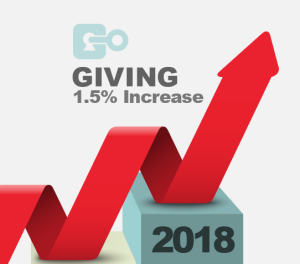By Andy Posner
High-growth nonprofits with a revenue model face significant challenges when it comes to funding their growth: grant dollars are scarce, often come with restrictions, and rarely are sizable enough to allow for mid-to-long term planning. At the same time, nonprofits cannot raise equity (and even if they could, the vast majority would likely neither wish to give up ownership of the mission nor be able to generate the returns expected by equity investors).
This leaves a final source of growth capital — debt. Nonprofits are not limited in the amount of capital they borrow. However, borrowing for operating investments like technology and personnel “blows up” a nonprofit’s balance sheet because the liability is not counterbalanced by an asset, but instead enables investments that, over time, will generate positive cash flow.
Many nonprofits take on debt for asset purchases such as property or equipment, or to fund a loan pool; this is not problematic because the liability is offset by an asset. This issue is crucial. Like any business, an over-leveraged nonprofit’s existence can be threatened, as donors, investors and others may become less inclined to support the organization.
Debt can be a powerful instrument for scale. Many Community Development Financial Institutions (CDFIs) have used a mechanism known as a Direct Public Offering (DPO) to capitalize loan funds. A DPO is a nonprofit private placement — debt issuance — that takes advantage of one of several federal exemptions that allow nonprofits to issue debt without overly burdensome filing requirements, such as with the Securities and Exchange Commission (SEC). The great thing about a DPO is that it allows a nonprofit to inexpensively raise capital for asset purchases and to seed loan funds.
But, what about growth capital? What about the unrestricted operating money needed to solve social and environmental challenges, be they predatory lending, climate change, homelessness, recidivism, or hunger? Remember that using debt for operating costs is ill-advised. Here’s a possible solution.
Suppose the debt is issued, not by the nonprofit, but rather by a subsidiary organization controlled by the nonprofit. Structured this way, the liability is held on the balance sheet of the subsidiary, thereby preventing the parent nonprofit from becoming over-leveraged. Here’s how to get the funds from the subsidiary to the parent. The proceeds of the investment can be donated to the parent in the form of an unrestricted grant, which the parent recognizes as income on its profit and loss statement, increasing its net assets and therefore strengthening its balance sheet, much as an equity investment would.
The parent now has money for growth capital with which it can make the critical operating investments needed to increase earned income. But how does the parent then get the funds back to the subsidiary to pay back its investors? (Remember that the subsidiary is a pass-through entity. It does not make the consumer loans that generate revenue.) The answer is that the subsidiary can provide the parent a service, such as accounting, marketing, or even loan servicing, with the value of that servicing contract equal to what’s due to the investors.
Let’s explore this in more detail. Imagine a parent nonprofit, Main Street Soup Kitchen (the Kitchen), where the leaders want to open a restaurant run by ex-offenders that will, over time, generate enough revenue to cover its operating expenses. The Kitchen seeks $1 million in operating money to pay for the personnel, marketing, and legal services needed to launch the restaurant. To raise this growth capital, a subsidiary called Main Street Social Investment Club (the Club) is created, which issues $1 million in debt at 1 percent to social impact investors via a DPO.
Let’s say that the term for each investment is 10 years with annual interest payments and a lump sum repayment of the principal upon maturity. Ten investors — individuals, foundations, family offices, and others – would each invest $100,000. The Club shows the $1 million as a liability on its balance sheet and donates the proceeds to the Kitchen, which in turn recognizes the money as an unrestricted grant. The Kitchen uses the funds to scale its operations, and soon the restaurant is generating revenue.
To make the annual interest payment of $10,000, the Club charges the parent nonprofit, Main Street Soup Kitchen, $10,000 for marketing services each year, which it then books as income and uses it to repay investors. When the notes mature in 10 years, Main Street Soup Kitchen will be invoiced for $1 million.
In a sense, this approach allows a nonprofit to raise equity without it being equity. Yes, the Club must find a specific type of impact investor willing to make a patient investment and, possibly, at a concessionary (below market) rate. But, there are hundreds of billions of dollars sitting in various tax-exempt endowments, a pool of capital that can be leveraged to unlock tremendous impact. Meanwhile, the Kitchen has the unrestricted funds it needs to change lives while ensuring that is not over-leveraged and remains financially healthy.
Finally, this structure can be set up by any nonprofit for minimal cost. The creation of a nonprofit subsidiary, the drafting of a prospectus, and a regulatory review can be done for anywhere between $25,000 to $100,000 and will enable the parent nonprofit to quickly raise hundreds of thousands, or even millions of dollars, that it would otherwise spend years chasing from dozens of foundations through their extremely competitive grant processes
As more nonprofits implement this strategy, they can spend their valuable time and energy on fulfilling their missions instead of the endless cycle adjusting to, and meeting the expectations of, the whims and requirements of philanthropy.
*****
Andy Posner is founder of the Capital Good Fund in Providence, RI. He is treasurer of the national board of directors of the Credit Builders Alliance in Washington, D.C., and a board member of the Community Reinvestment Fund in Minneapolis, Minn.
NPT Editor’s Note: This column should not be considered investment advice. Seek a trusted financial specialist before embarking on this type of transaction.










